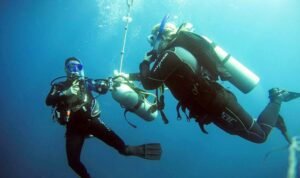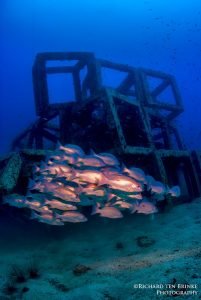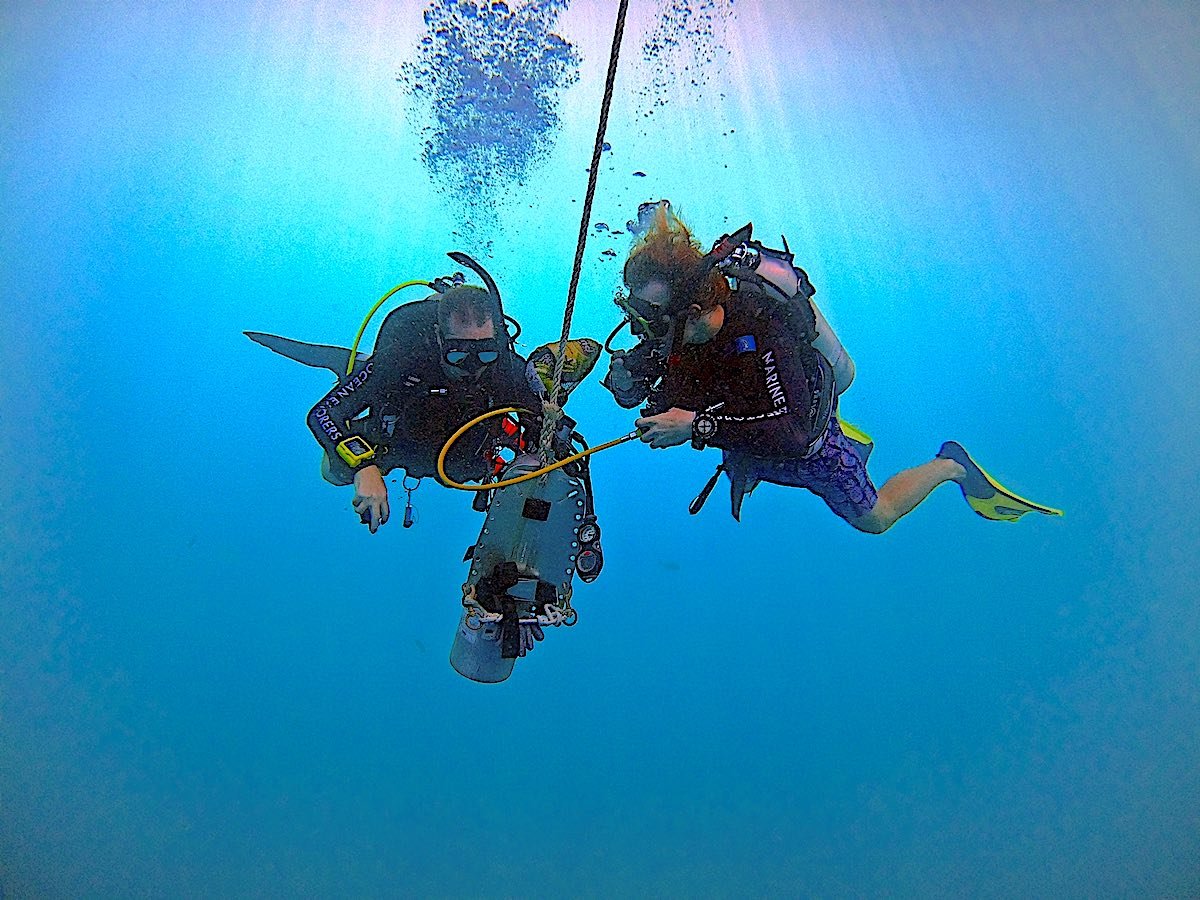PADI Deep Dive Specialty
The PADI Deep Dive Specialty is a certification course offered by the Professional Association of Diving Instructors (PADI). It is designed to provide divers with the knowledge and skills necessary to safely explore deeper depths while scuba diving.
Diving into the depths of the ocean is a thrilling and awe-inspiring experience. However, it also comes with its own set of challenges and risks. That is why the PADI Deep Dive Specialty is so important. This course goes beyond the basic scuba diving certification and equips divers with the specialized knowledge and skills needed to safely navigate the depths.
PADI Deep Dive Specialty is so important. This course goes beyond the basic scuba diving certification and equips divers with the specialized knowledge and skills needed to safely navigate the depths.
During the course, divers will learn about the physiological effects of diving at greater depths, as well as the potential hazards and risks associated with deep diving. They will also gain a deeper understanding of dive planning, gas management, and emergency procedures specific to deep diving.
One of the key components of the PADI Deep Dive Specialty is learning how to properly use dive computers and other advanced dive equipment. These tools are essential for monitoring and managing dive profiles, decompression stops, and gas mixtures at greater depths. By mastering the use of these tools, divers can ensure their safety and maximize their bottom time during deep dives.
In addition to the theoretical knowledge, the PADI Deep Dive Specialty also includes practical training sessions. Divers will have the opportunity to practice their skills in controlled environments, such as confined water or pool settings, before progressing to open water dives. These training sessions will focus on buoyancy control, navigation, and emergency procedures specific to deep diving.
Upon successful completion of the course, divers will receive the PADI Deep Dive Specialty certification. This certification is recognized worldwide and allows divers to explore depths of up to 40 meters (130 feet) with a buddy who holds the same certification or higher.
The PADI Deep Dive Specialty opens up a whole new world of underwater exploration for divers. From exploring shipwrecks resting on the ocean floor to encountering unique marine life that resides in the deep, divers with this certification have the skills and knowledge to safely venture into the depths and experience the wonders that lie beneath the surface.
Whether you are an experienced diver looking to expand your skills or a beginner eager to explore the ocean’s depths, the PADI Deep Dive Specialty is an essential step in your diving journey. So, take the plunge and embark on this exciting adventure to discover the hidden treasures of the deep.
During the PADI Deep Dive Specialty, participants will learn the necessary skills and knowledge to safely plan and execute dives to greater depths. The duration of the course may vary depending on several factors.
Firstly, an individual’s prior diving experience plays a significant role in determining the length of the course. For those who already have a considerable amount of diving experience and are comfortable with advanced diving techniques, the course may be completed in a shorter timeframe. On the other hand, beginners or those with limited diving experience may require additional time to grasp the concepts and skills taught during the course.
Secondly, the specific training program chosen can also impact the duration of the PADI Deep Dive Specialty. Some programs may offer an intensive schedule, with longer class hours and more frequent dives, allowing participants to complete the course in a shorter timeframe. Alternatively, other programs may adopt a more relaxed pace, spreading the training over a longer period to ensure participants have ample time to practice and master the required skills.
On average, the PADI Deep Dive Specialty takes around two to three days to complete. This timeframe allows for a comprehensive learning experience, covering topics such as dive planning, decompression theory, equipment considerations, and emergency procedures. Participants will also have the opportunity to practice their skills in real diving scenarios, gradually increasing their depth limits under the guidance of a qualified instructor.
It is important to note that the PADI Deep Dive Specialty is not a course to be rushed through. The emphasis is on safety and building confidence in diving at greater depths. Therefore, it is recommended to choose a training program that aligns with your individual needs and allows for sufficient practice and reinforcement of the skills learned.
The theoretical component of the PADI Deep Dive Specialty is designed to provide divers with a comprehensive understanding of the risks and considerations associated with deep diving. Divers will learn about the physiological effects of increased pressure at depth, such as nitrogen narcosis and decompression sickness. They will also explore the equipment required for deep dives, including specialized dive computers and gas management systems.
During the practical component of the course, divers will have the opportunity to apply their knowledge in real-world diving scenarios. This may involve conducting deep dives under the supervision of a certified PADI instructor. Divers will learn how to plan and execute deep dives safely, including proper descent and ascent techniques, gas management, and emergency procedures.
In addition to the theoretical and practical components, the PADI Deep Dive Specialty may also include optional training in underwater navigation. This additional training will teach divers how to navigate effectively in low visibility conditions, using a compass and natural navigation cues. This skill is particularly important for deep dives, where maintaining a sense of direction and position is crucial.
Upon successful completion of the PADI Deep Dive Specialty, divers will receive a certification card indicating their qualification to dive to depths of up to 40 meters (130 feet) or beyond, depending on local regulations. This certification opens up a whole new world of diving opportunities, allowing divers to explore deeper wrecks, vibrant coral reefs, and encounter marine life that is often found at greater depths.
It is important to note that the PADI Deep Dive Specialty is an advanced diving course and requires divers to have a certain level of experience. Most dive centers and instructors will require divers to have a minimum of 20 logged dives before enrolling in the course. This ensures that divers have a solid foundation of diving skills and experience before undertaking the challenges of deep diving.
Theoretical Knowledge Development
The theoretical portion of the course covers important topics related to deep diving, including:
- Understanding the effects of increased pressure at depth
- Planning and executing deep dives
- Managing gas consumption and bottom time
- Recognizing and managing the risks associated with deep diving
- Using specialized equipment for deep dives
- Understanding the physiological and psychological aspects of deep diving
- Learning about decompression theory and procedures
- Exploring the effects of nitrogen narcosis and how to mitigate it
- Studying the different types of deep diving environments and their unique challenges
During this phase, divers will study the PADI Deep Diver Manual or complete the eLearning program, which provides a comprehensive overview of the necessary knowledge and skills. The manual covers topics such as dive planning, gas management, equipment considerations, emergency procedures, and dive physics. It also includes case studies, quizzes, and knowledge reviews to ensure a thorough understanding of the material.
In addition to the manual or eLearning program, divers may also attend classroom sessions where they can ask questions, engage in discussions, and receive further clarification on any topics they find challenging. These sessions are led by experienced instructors who have extensive knowledge and expertise in deep diving.
Throughout the theoretical knowledge development phase, divers are encouraged to actively participate in their learning by taking notes, asking questions, and seeking additional resources or research materials to deepen their understanding. This phase is designed to provide divers with a solid foundation of theoretical knowledge that will serve as the basis for their practical training in the water.
During the practical training component of the PADI Deep Dive Specialty, students will have the opportunity to put their theoretical knowledge into practice in a variety of real-life diving scenarios. This hands-on experience is crucial in developing the necessary skills and confidence to safely explore the depths of the underwater world.
One of the practical aspects of the course is learning how to properly plan and execute deep dives. Students will learn about factors such as dive site selection, gas management, and decompression planning. They will also learn how to use specialized equipment, such as dive computers and redundant air sources, to ensure their safety and the success of the dive.
Another important aspect of the practical training is developing proper buoyancy control and trim. Deep dives often require precise control of buoyancy to conserve energy and maintain a comfortable position in the water. Students will learn techniques for achieving neutral buoyancy and maintaining a streamlined body position, which not only enhances their diving experience but also helps to protect the delicate marine environment.
In addition to planning and buoyancy control, students will also have the opportunity to practice various skills specific to deep diving. These skills may include emergency procedures, such as gas sharing and out-of-air situations, as well as navigation techniques for exploring unfamiliar dive sites. By practicing these skills in a controlled environment under the guidance of a qualified instructor, students can build their confidence and improve their ability to handle challenging situations that may arise during deep dives.
Throughout the practical training component, safety is of utmost importance. Students will learn how to assess and manage risks associated with deep diving, as well as how to recognize and respond to potential hazards. They will also learn about the importance of proper dive planning and communication with their dive buddy or team.
By the end of the practical training component, students will have gained valuable experience and a deeper understanding of the intricacies of deep diving. They will be equipped with the skills and knowledge necessary to safely explore the wonders that lie beneath the surface of the water.
During the open water dives, divers will have the opportunity to put into practice the skills they have learned in the classroom and in confined water. These dives typically take place in a natural body of water such as a lake, quarry, or the ocean, providing divers with a real-world environment to apply their knowledge.
The open water dives are divided into several sessions, each building upon the previous one. In the first dive, divers will typically descend to a depth of around 30 feet (9 meters) under the close supervision of their instructor. Here, they will practice basic skills such as mask clearing, regulator recovery, and buoyancy control.
As the training progresses, divers will gradually increase their depth and complexity of the dives. They may explore underwater rock formations, navigate through underwater obstacles, and encounter various marine life. These experiences not only enhance the divers’ skills but also provide them with a sense of awe and appreciation for the underwater world.
Throughout the open water dives, safety is of utmost importance. Divers are taught to plan their dives, monitor their air supply, and communicate effectively with their dive buddy and instructor. They also learn how to handle emergency situations and perform rescue techniques, ensuring that they are well-prepared for any unforeseen circumstances.
Upon completion of the open water dives, divers will have gained the necessary skills and experience to be certified as an open water diver. This certification allows them to dive independently with a buddy, up to a maximum depth of 60 feet (18 meters), opening up a whole new world of underwater exploration.
Skills Development
Throughout the course, divers will also learn and practice various skills specific to deep diving, including proper buoyancy control at depth. This skill is crucial as it allows divers to maintain their position in the water column and avoid descending too quickly or ascending too rapidly, which can lead to decompression sickness.
In addition to buoyancy control, divers will also learn how to use a dive computer or dive planning software to track and manage dive profiles. This technology provides valuable information such as depth, time, and ascent rates, allowing divers to monitor their dives and make informed decisions about their safety and decompression stops.
Another important skill that divers will develop is the ability to deploy a surface marker buoy (SMB) for safety and ascent signaling. The SMB is a brightly colored inflatable device that is deployed at the end of a dive to indicate the diver’s location to the surface support team. It also serves as a visual signal to other boats or divers in the area, ensuring that the diver is seen and not accidentally hit by passing vessels.
Furthermore, divers will learn the art of managing gas consumption and making appropriate gas switches. Deep dives often require the use of different gas mixtures at different depths to prevent nitrogen narcosis and oxygen toxicity. Divers will learn how to calculate gas consumption rates, plan gas switches, and ensure they have enough breathing gas to safely ascend and complete their decompression stops.
Last but not least, divers will practice performing safety stops and decompression dives, if necessary. Safety stops are short pauses at a shallow depth, usually around 5 meters, to allow the body to off-gas and eliminate excess nitrogen. Decompression dives, on the other hand, involve longer stops at specific depths to safely release accumulated nitrogen from the body after deep dives. These stops are critical to minimize the risk of decompression sickness and ensure divers can safely ascend to the surface.
By developing these skills, divers will be well-prepared for safe and enjoyable deep diving experiences, allowing them to explore the wonders of the underwater world with confidence and peace of mind.
Final Certification
Upon successful completion of the theoretical and practical components of the PADI Deep Dive Specialty, divers will receive a certification card recognizing their achievement. This certification allows divers to explore depths of up to 40 meters (130 feet) in accordance with PADI guidelines.
The certification card is not just a piece of plastic; it represents a significant milestone in a diver’s journey. It serves as proof of their dedication, commitment, and expertise in deep diving. With this certification, divers gain access to a whole new world beneath the surface, where they can discover breathtaking underwater landscapes, encounter fascinating marine life, and explore historical wrecks.
Having a PADI Deep Dive Specialty certification opens up a wide range of diving opportunities. Divers can join dive trips and expeditions specifically designed for exploring deeper depths. They can venture into famous dive sites like the Blue Hole in Belize, the Great Barrier Reef in Australia, or the wrecks of Truk Lagoon in Micronesia. These destinations offer unique and thrilling experiences that are only accessible to certified deep divers.
Furthermore, the certification card serves as a testament to a diver’s competence and safety awareness. Deep diving comes with its own set of challenges and risks, and PADI ensures that certified divers have the necessary knowledge and skills to handle these situations responsibly. By completing the Deep Dive Specialty course, divers learn about proper gas management, decompression procedures, and emergency protocols, ensuring that they are well-prepared for any potential hazards they may encounter during their dives.
In addition to the practical benefits, the certification card also holds sentimental value for divers. It symbolizes their personal growth and accomplishments in the world of diving. It serves as a reminder of the challenges they overcame, the friendships they forged, and the unforgettable experiences they had underwater.
Furthermore, the certification card is a gateway to further diving education and specialization. Once divers have obtained their PADI Deep Dive Specialty certification, they can pursue other advanced certifications, such as wreck diving, night diving, or underwater photography. These additional certifications not only enhance their skills but also broaden their diving horizons.
Ultimately, the PADI Deep Dive Specialty certification is a recognition of a diver’s passion for exploration and their commitment to the underwater world. It grants them access to the wonders of the deep and empowers them to embark on new adventures beneath the surface. So, for those who aspire to delve into the depths and discover the mysteries of the underwater realm, obtaining the PADI Deep Dive Specialty certification is an essential step on their diving journey.
